Posts by nsiteamadmin
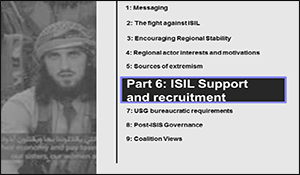
Part 6 ISIL Support and Recruitment
SMA CENTCOM Reach-back Reports – Part 6: ISIL Support and Recruitment. Author | Editor: SMA Program Office. This is Part 6 of a 9 part series of SMA Reach back responses to questions posed by USCENTCOM. Each report contains responses to multiple questions grouped by theme. At the request of United States Central Command (USCENTCOM), […]
Continue Reading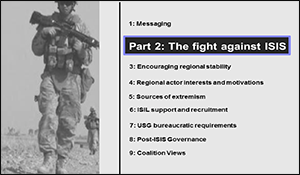
Part 2 Learning From the Fight Against ISIS
SMA CENTCOM Reach-back Reports – Part 2: The Fight Against ISIS. Author | Editor: SMA Program Office. This is Part 2 of a 9 part series of SMA Reach back responses to questions posed by USCENTCOM. Each report contains responses to multiple questions grouped by theme. At the request of United States Central Command (USCENTCOM), […]
Continue Reading
Discourse Indicators of Gray Zone: South China Sea
Discourse Indicators of Gray Zone Activity: South China Sea Case Study. Author | Editor: Kuznar, L., Popp, G. & Peterson, N. (NSI, Inc). The increasing use of emotive themes and rhetorical devices (that amplify a message’s emotional effect) provide indicators of gray zone activities in speeches made by Chinese, Philippine, and Vietnamese government officials during […]
Continue Reading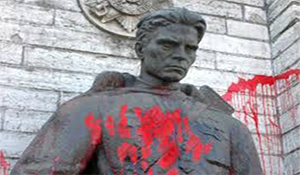
Discourse Indicators of Gray Zone: Estonia
Discourse Indicators of Gray Zone Activity: Russian-Estonian Relations Case Study. Author | Editor: Kuznar, L., Popp, G. & Peterson, N. (NSI, Inc). The increasing use of emotive themes and rhetorical devices (that amplify a message’s emotional effect) provide indicators of gray zone activities in speeches made by Eurasian regional leaders and has the potential to […]
Continue Reading
Discourse Indicators of Gray Zone: Crimea
Discourse Indicators of Gray Zone Activity: Crimean Annexation Analysis Case Study. Author | Editor: Kuznar, L., Popp, G. & Peterson, N. (NSI, Inc). The increasing use of emotive themes and rhetorical devices (that amplify a message’s emotional effect) provide indicators of gray zone activities in speeches made by Eurasian regional leaders prior to and during […]
Continue Reading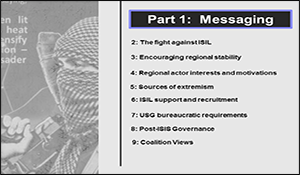
Part 1 A Compendium of Messaging Reports
SMA CENTCOM Reach-back Reports – Part 1: Messaging. Author | Editor: SMA Program Office. This is Part 1 of a 9 part series of SMA Reach back responses to questions posed by USCENTCOM. Each report contains responses to multiple questions grouped by theme. At the request of United States Central Command (USCENTCOM), the Joint Staff, […]
Continue Reading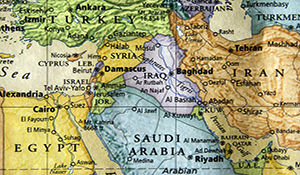
Syria Da’esh Insurgency
Question (R3 QL7): How does Da’esh’s transition to insurgency manifest itself in Syria; which other jihadist groups might offer the potential for merger and which areas of ungoverned space are most likely to offer conditions conducive for Da’esh to maintain some form of organizational structure and military effectiveness? Author | Editor: Polansky (Pagano), S. (NSI, […]
Continue Reading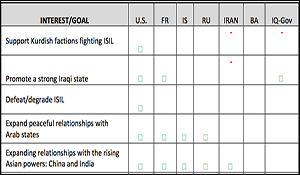
Regional Interests Analysis
Question (S2): In light of their divergent goals and interests, what are the necessary factors that would permit the U.S.-led Coalition, regional stakeholders (including Israel, Russia, and Iran), or jihadist groups to achieve their aims in Iraq? Where do disparate groups’ interests align and where do they diverge? What can the U.S. coalition do to […]
Continue Reading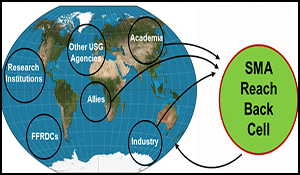
Round 1 Questions Compilation
Compilation of Round 1 Questions. Author | Editor: Rhem, S. (SRC & SMA Team). Round 1 Questions Quick Look What are the factors that could potentially cause behavior changes in Pakistan and how can the US and coalition countries influence those factors? What are the strategic and operational implications of the Turkish Army’s recent intervention […]
Continue Reading
Smart-Phones for Propaganda
Question R2 (QL4): The wide-spread, public access to smartphones has been a game-changer for the distribution and production of propaganda. Is there more data available about the types of apps (e.g., WhatsApp, Facebook, Telegram, Viber) used on smartphones to distribute propaganda, and the methods through which this is accomplished? Author | Editor: Ziemke, J. (John […]
Continue Reading